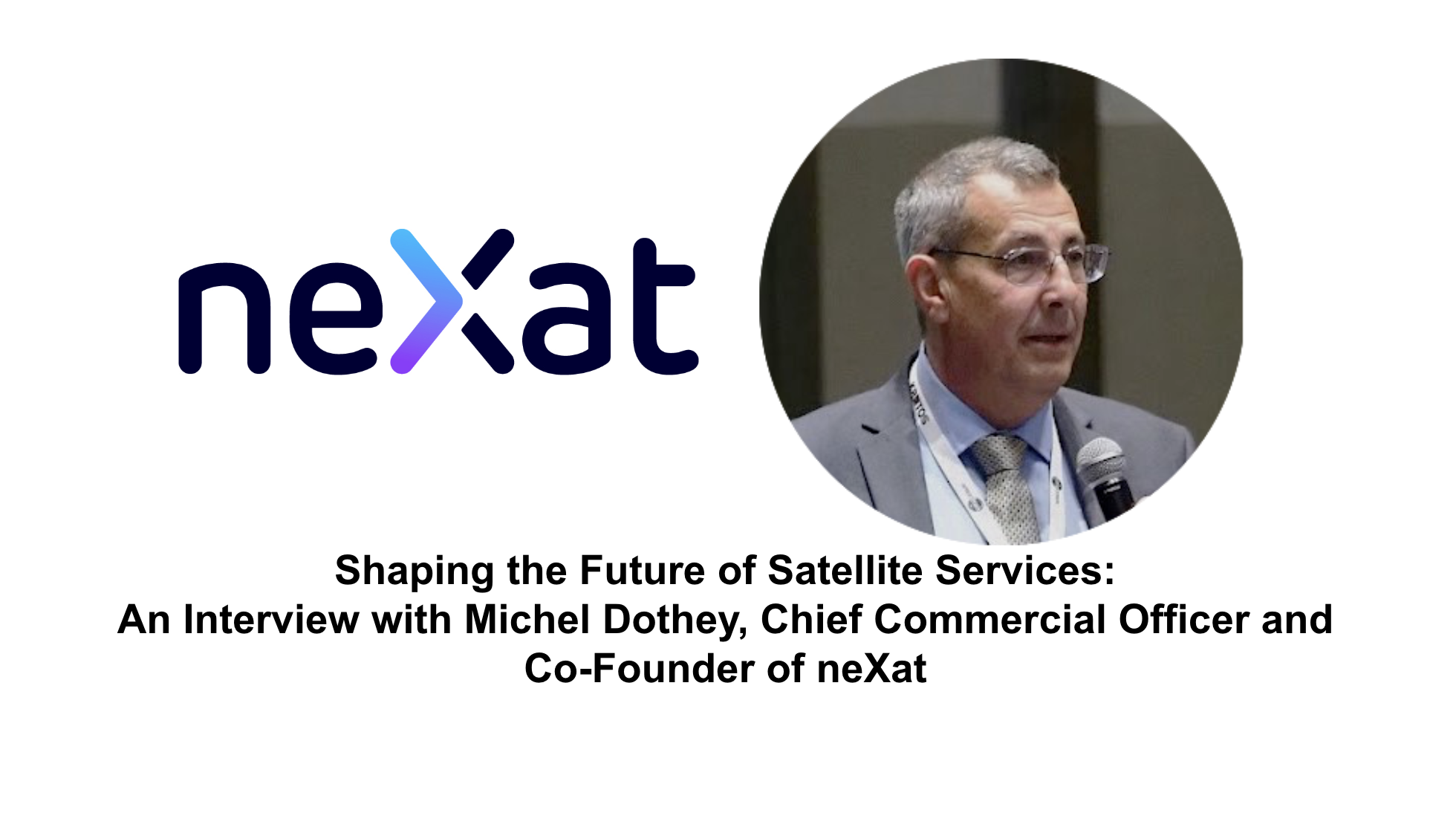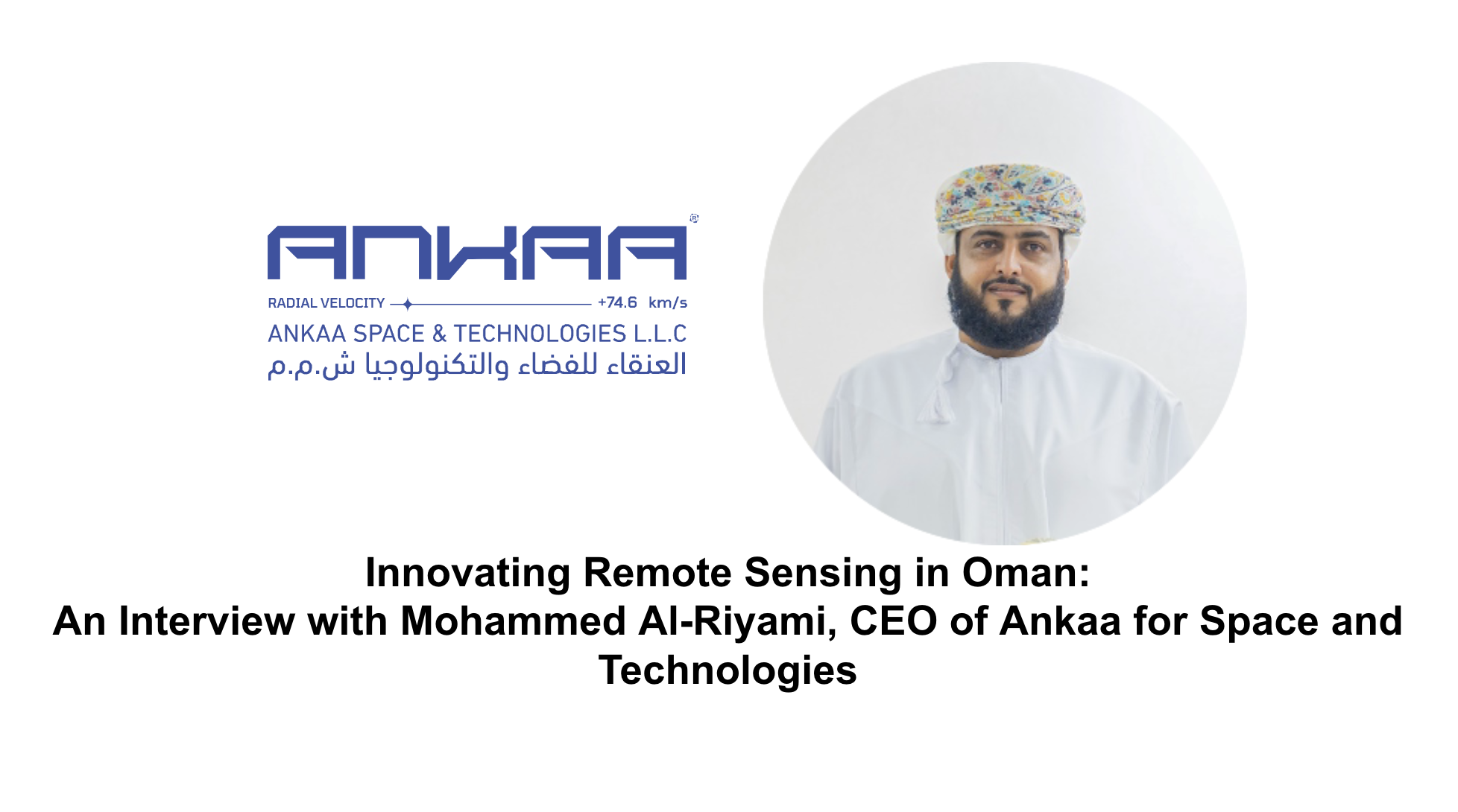
In this interview, we sit down with Michel Dothey, Chief Commercial Officer (CCO) and Co-Founder of neXat, a leading satellite service provider. With over 35 years of experience in the telecommunications and satellite industries, Michel has held prominent roles in companies like SAIT Radio-Holland and RTBF, and played a key role in defining the Inmarsat-M standard in the late 1980s. Michel’s journey with neXat began in 2012 when he joined SatADSL, which later rebranded as neXat in 2022. As a member of the Technology Advisory Board of the World Teleport Association (WTA), Michel brings a wealth of knowledge and leadership to the satellite industry. Join us as we explore Michel’s vision for neXat and its impact on global satellite communications.
1. Could you elaborate on the core functionalities of the neXat platform and how it addresses the specific challenges faced by the satellite industry?
The vendor-agnostic neXat platform allows operators to integrate all their hubs’ infrastructure wherever they may be located, whatever their brand manufacturer, in a single cloud-based and virtualized platform. This simplifies operations while enhancing capabilities – and no upfront investment or physical infrastructure is needed.
The core functionalities of the OSS/BSS neXat platform are:
- Hierarchical Monitoring & Management
- Billing with electronic payment
- Ticketing
- Traffic shaping
- BGP traffic routing
- API based for efficient orchestration (MEF & TMForum)
- Directly compatible with major hub manufacturers (iDirect, Dialog, Hughes Jupiter 2, …)
- Automated life cycle management of the terminals
- E-MarketPlace with coverage maps
- Full traceability
- 35 satellites with 100+ beams (Ka, Ku, C bands) directly accessible
- Cloud-based, automatically always up to date.
- Quick deployment

With neXat, operators are not limited to offering services provided by their hubs’ native capabilities. Through the integration of their hubs on the neXat platform, capabilities can be extended to offer additional services without having to buy additional features like traffic shapers or several software modules. Since the neXat OSS-BSS platform has the ability to shape traffic, it offers multiple kinds of bandwidth management optimization services, independently of the specific hub technology, such as contended or volume-based services and flexible VNO features.
Resilience, flexibility, security, and performance quality features compliment the terminal and network management and monitoring, billing services and online payment features, ticketing system, and full action traceability, displaying author and date. Furthermore, to help with cash flow, the teleport operator may improve collection of funds from their customer base through pre-paid vouchers and on-line payments, all easily and fully accessible to the teleport operator through a white-labelled Customer Management Tool (CMT).

2. What sets neXat apart from other OSS/BSS platforms in the market, and what unique value proposition does it offer to satellite operators?
What distinguishes us from other OSS/BSS platforms on the market is that our platform has been specifically developed for satcom industry based on our own experience of more than 10 years as a Satellite Service Provider, unlike other OSS/BSS platforms that are generally designed for mobile operators and poorly adapted for satellites.
3. How does neXat handle the complexities of different satellite technologies and business models, such as GEO, MEO, LEO, and hybrid constellations?
The complexity of the satellite network built today, requires accelerated efforts towards the “fully virtualized ground network.” It requires multiple abstraction layers, managed and orchestrated by common service definitions that meet new needs in terms of capacity, flexibility, cost, service creation, and resiliency. Totally based on API (internally and externally) our new OSS/BSS platform allows Teleport Operators to enter in this new age of virtualisation, SDN (Software Defined Networks) and Orchestration allowing drastic reduction of their cost of operations.
4. Can you provide examples of successful neXat implementations, and the benefits realized by your customers?
The first customer is…us! Indeed, historically as Satellite Service Provider, we were facing a lot of challenges: how to manage efficiently more than 100 resellers worldwide, multiple satellite providers, multiple hub technologies, …? So, because there was nothing available on the market, we decided very early to build our own platform. Then later, we realized that this unique platform was of high interest for hub/teleport operators and for satellite operators that are increasingly offering managed services.
As we are providing in general our platform labelled with the brand of our clients, we cannot disclose all of them, but currently, the most remarkable one is Arabsat for which we are deploying our platform interconnecting 6 hubs (Dialog & iDirect) in different locations(UK, Norway, Germany, Finland and Cyprus and Riad).
We are also highly active for the governmental market, and for example, in Europe, we are actively involved in the development of the future GovSatCom hub interconnecting all the European satellite operators for governmental needs.
5. How does neXat support the entire satellite service lifecycle, from order management to billing and customer care?
Satellite service lifecycle is fully managed and orchestrated via the API of the hub. This means that any hub exposing API (North Bound Interface) can be connected to our platform.
With our hierarchical platform, the order is placed by the reseller (local Distributor) directly by clicking on the coverage map available via its self-service portal, then selecting the service plan, choosing between a private or a public IP address, giving a name to the terminal and that’s it ! All the rest is fully automated: so, the terminal is activated in less than a minute and the billing starts automatically!
Customer care is provided via advance monitoring (real time traffic, signal level, Deep Packet Inspection, congestion, volume consumption,…) and ticketing for efficient customer support.
6. What is neXat’s approach to data management and analytics, and how does it help satellite operators derive insights from their data?
Indeed, we are providing Deep Packet Inspection functionality, but at our level it is used mainly for security (firewall), and to help the users to identify the applications consuming the bandwidth, but also to provide operators with lawful interception when needed in their country.
We are not selling any data nor analytics to any third party.
7. How does neXat ensure security and compliance with industry regulations and standards?
As provider of critical solutions, security is of course a major concern for us, and, without entering into technical details, I confirm we are of course compliant with the highest commercial security standards but also with governmental security standards.
For example, for governmental needs, we are delivering private PoPs in highly secured data centers in order to guarantee the highest level of security and that all the traffic stays in the country.
8. Can you explain how neXat integrates with other systems and applications used by satellite operators?
All integrations are done via API (Application Programming Interface).
So, we can integrate already existing applications but, as we expose API externally, our platform can also be integrated in a wider system.
Moreover, our platform is future proof. Automatic, free updates to the latest available hub technology, such as the Kratos OpenSpace platform or the next generation ST Engineering virtual hub, and the latest Open Architecture API, like MEF (Metro Ethernet Forum) and TM forum, for a seamless integration with Telco networks, requiring zero CAPEX, are guaranteed.
9. What are the key trends and challenges shaping the satellite industry, and how is neXat positioned to capitalize on these opportunities?
The rising prominence of LEO satellites, such as the SpaceX constellation, Starlink, has highlighted the need for drastically reduced costs. This new competitive market environment conditions have motivated neXat to make a shift, with the support of ESA (European Space Agency), from connectivity provider to technology provider. Through the offering of the OSS/BSS orchestration platform, neXat enables satellite and teleport operators to manage their HUBs, and capacities remotely and virtually, all in one place, maximizing operational efficiency and flexibility while reducing costs and increasing competitive relevance.
10. What is neXat’s vision for the future of the platform, and how do you see it evolving to meet the changing needs of the satellite industry?
Satellite industry is on the cusp of a fundamental change since the inception of satellite communications over five decades ago. Largely driven by massive, recent investments in space hardware, the value chain is witnessing a number of technological disruptions that have the potential to drastically alter the dynamics of a matured industry. Small Sats, software-defined payloads, new multi-orbit and multi-band satellite architectures, and other developments such as cloud-based hubs are making space an increasingly complex and dynamic marketplace. In this continuously disrupting environment, the satellite industry, that constantly strive to stay competitive, need new tools in order to keep their operations profitable and always up to date. This is exactly what neXat is offering for the ground segment that is at least as important and challenging than the space segment: all the progresses on the satellite side are only possible with similar progresses of the ground segment. This is why flexibility and hence virtualization are key nowadays, as well as the new open API standards (MEF and TMForum) allowing networks (satellite & terrestrial) to integrate together in order to always offer seamlessly and dynamically the best solution to the customers in a totally automated way.

11. What are some of neXat’s notable partnerships in the Gulf and MENA regions, and how have these collaborations contributed to the company’s growth and market penetration?
The most important ones are:
– Arabsat for whom we are currently deploying our full OSS/BSS with all advanced features.
– Rascom which was our first iDirect Ku-band and then C-band provider covering Africa completely with their Rascom 1r satellite that is sharing a pool of bandwidth that we are shaping ourselves in our PoP in order to offer a wide range of services to our customers (much wider than possible originally with their iDirect hub).
– Yahsat which is our main Ka-band provider for Africa.
– Azercosomos was also an important partner as they were our main C-band supplier for Africa with their Africasat satellite.
Special mention for Sat-MENA that installed recently their Dialog hub in Oman and that we are about to connect to our platform to allow them to access to our large network of local partners (75 in Africa + 25 in the rest of the world) as well as to our worldwide network of 35 satellites (Ka, Ku and C band).

Alex Cresniov, Founder of SpaceTech in Gulf
About the author: Passionate in the Space industry with significant expertise in Policy Making, Global Socio-Economic Assessments, and DeepTech Analytics.
Email: alexei@spacetech-gulf.com









